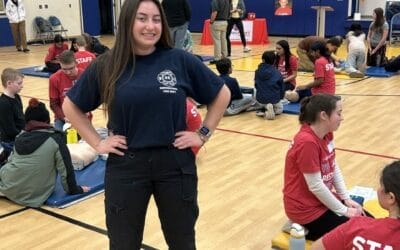Protecting Youth from Sudden Cardiac Arrest and Creating Heart-Safe Communities for Kids
We are committed to providing Sudden Cardiac Arrest (SCA) prevention and awareness, education, and support to the communities of southeast Pennsylvania.
Upcoming CPR Training Events
Learn how to save a life using CPR and an AED!
Sign up & register for a free upcoming training event.

140+ AEDS Placed
Financially supported the installation of over 140+ AEDs in local schools, youth-based organizations, and youth athletic leagues throughout Southeast Pennsylvania.

11,250 Students Trained in CPR+AED
Trained over 11,250 Downingtown 6th grader students and 700+ parents, teachers and coaches in life-saving CPR+AED skills.

Provide Free Heart Screenings
Screened 2,150 youth, identifying “potentially life-threatening” heart conditions in approximately 36 youths.
SUPPORT our efforts to increase awareness of #SuddenCardiacArrest

Become an AHF Volunteer
Our Foundation is always looking for support and community volunteers. We greatly appreciate those can help out with our annual 5K event, heart screenings and other events
Foxwynd Foundation Supports Aidan’s Hearts Efforts to Make Communities Heart-Safe
FOXWYND FOUNDATION SUPPORTS LOCAL ORGANIZATION’S LIFE-SAVING PROGRAM DOWNINGTOWN, PA - A local organization that...
MLK Day CPR+AED Training and Community Partner Fair a Success!
A heartfelt thank you to everyone who made our inaugural Martin Luther King Jr. Day of Service an incredible success! ...
Turning Pain Into Purpose: Teigan Brown Celebrates 10 Years a Heart Hero
You’ve heard her name and seen her in our photos many times throughout the years. Teigan Brown, our very first Heart...

Meet Aidan
Aidan J Silva was a bright child filled with love, joy, compassion, and a sensitivity that touched every person he had come to know.
He loved hanging out with his older cousins at his annual family reunion and he was active in soccer, basketball and baseball, and loved the Phillies.
Where We’ve Placed AEDs


